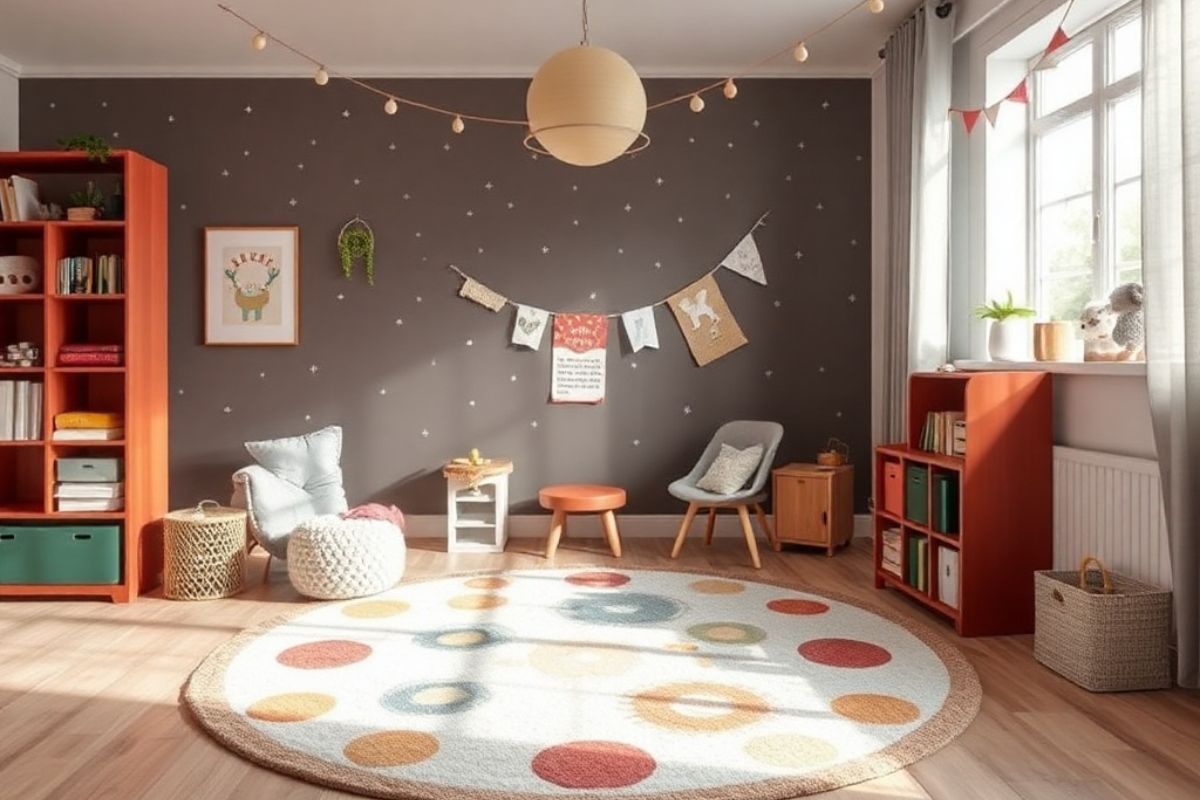Faded Walls, Fresh Starts_ Signs It’s Time to Repaint Your Home
.jpg)
Your home’s walls are like a diary—they tell stories of laughter, family gatherings, and everyday life. But over time, even the most well-loved spaces start showing their age. From the scuff marks that accumulate on corners to the colors that begin to feel lackluster, your walls are constantly at the mercy of daily life. If your walls could talk, they might be whispering (or shouting) that it’s time for a refresh.
Professional house painting services and residential painting experts know that a fresh coat of paint does more than just cover up wear and tear—it can completely transform the mood, value, and energy of your home. It’s a simple yet powerful way to rejuvenate your living space.
Here’s how to spot the telltale signs that your walls are ready for renewal, plus tips to make your next paint job last longer.
6 Unmistakable Signs Your Home Needs Repainting

- Fading or Discoloration
- Sun Damage: Sun exposure can cause significant fading, especially on south-facing walls. Over time, sunlight causes the pigment in the paint to break down, leading to dull or uneven colors. This is particularly noticeable in rooms with large windows or those facing direct sunlight.
- Oxidation: Older paints often oxidize and turn yellow or dull over time. This is more common with certain types of oil-based paints and in areas where humidity and air quality may be an issue.
- Solution: To prevent further damage, opt for fade-resistant paints specifically designed for high-sun areas. These types of paints often contain special UV inhibitors that help preserve the color and protect against fading.
- Sun Damage: Sun exposure can cause significant fading, especially on south-facing walls. Over time, sunlight causes the pigment in the paint to break down, leading to dull or uneven colors. This is particularly noticeable in rooms with large windows or those facing direct sunlight.
- Cracking, Peeling, or Bubbling Paint
- Causes: Cracked or peeling paint can be caused by moisture issues, poor prep work, or using low-quality paint. Moisture infiltration—whether from leaks, humidity, or condensation—can lead to the paint separating from the surface, forming bubbles or cracks.
- Warning Sign: Bubbles in your paint often indicate that moisture is trapped underneath the paint film. If you notice this, check for leaks or areas of excessive humidity, as the root cause needs to be addressed before repainting.
- Fix: The key to fixing cracked or peeling paint is proper surface preparation. Scrape off any loose paint, sand down rough patches, and apply a coat of primer before painting to ensure a smooth and long-lasting finish.
- Causes: Cracked or peeling paint can be caused by moisture issues, poor prep work, or using low-quality paint. Moisture infiltration—whether from leaks, humidity, or condensation—can lead to the paint separating from the surface, forming bubbles or cracks.
- Visible Stains That Won’t Quit
- Common Culprits: Stubborn stains from water, smoke, food, or even kids’ "artistic experiments" can mar the beauty of your walls. Over time, these stains may become more difficult to clean or cover with regular cleaning methods.
- Pro Tip: Use a stain-blocking primer before you repaint. This will help seal in any stains and prevent them from bleeding through your new coat of paint. For water stains, be sure to fix any leaks to avoid recurring issues.
- Common Culprits: Stubborn stains from water, smoke, food, or even kids’ "artistic experiments" can mar the beauty of your walls. Over time, these stains may become more difficult to clean or cover with regular cleaning methods.
- Outdated Colors That Clash With Your Life
- The 10-Year Rule: Paint colors can feel outdated after a decade. If your walls haven’t been updated in over 10 years, it might be time to consider a change. Colors can shift in trends and what was once in style might no longer fit your space or personal taste.
- Trend Check: Does your home still feel like it’s stuck in 2010? A fresh coat of modern, trending colors can instantly update your space and breathe new life into your rooms.
- The 10-Year Rule: Paint colors can feel outdated after a decade. If your walls haven’t been updated in over 10 years, it might be time to consider a change. Colors can shift in trends and what was once in style might no longer fit your space or personal taste.
- Chalky or Powdery Residue
- What it Means: If your walls have a chalky, powdery residue when touched, it’s a clear sign that the paint is breaking down. This typically happens with cheaper paints or when the paint is exposed to too much moisture.
- Test It: Rub your hand on the wall. If it leaves a chalky mark, it’s time to repaint. The breakdown of paint can expose underlying surfaces to the elements, which could lead to further damage.
- What it Means: If your walls have a chalky, powdery residue when touched, it’s a clear sign that the paint is breaking down. This typically happens with cheaper paints or when the paint is exposed to too much moisture.
- You’re Prepping for a Big Life Change
- Selling Your Home? A fresh coat of paint can significantly increase your home’s curb appeal and add to its market value. A well-painted home presents a clean, inviting space to prospective buyers.
- New Baby? Low-VOC (volatile organic compounds) paints are perfect for nurseries. These paints emit fewer chemicals into the air, creating a healthier environment for your little one.
- Work-from-Home Shift? Colors can impact productivity and focus. Consider using calming colors for relaxation or energizing tones to foster creativity and concentration in your home office.
- Selling Your Home? A fresh coat of paint can significantly increase your home’s curb appeal and add to its market value. A well-painted home presents a clean, inviting space to prospective buyers.
How Often Should You Repaint?
Repainting frequency varies based on the area of your home and the exposure to wear and tear. Here's a general guide to help you determine when it’s time for a refresh:

If you’re repainting due to issues like peeling or fading, it’s better to address these problems sooner rather than later to prevent further damage to the underlying surfaces.

5 Benefits of Hiring Residential Painting Pros
While DIY painting can be a fun weekend project, hiring professional painters comes with a host of benefits that can make a significant difference in the quality and durability of your paint job.
- Right Paint for the Job
Professional painters know which types of paint work best for each specific area. For example, matte finishes are ideal for lower-traffic areas, while semi-gloss or high-gloss paints work well in kitchens and bathrooms due to their durability and ease of cleaning. - Proper Surface Prep
One of the most critical steps in painting is proper surface preparation. Amateurs may skip this, but professionals understand the importance of repairing cracks, sanding, and priming to create a smooth, even surface for the paint to adhere to. - Time Savings
What might take a DIYer several weekends, professionals can complete in a matter of days. This is especially important for homeowners who need their home painted efficiently, without the mess or the time commitment of a DIY project. - Cleaner Process
Professional painters use techniques and tools that prevent paint from getting on your floors, furniture, or trim. They also know how to cover up areas you don’t want to be painted, leaving your home cleaner and more polished. - Longer-Lasting Results
Quality application means fewer touch-ups and less maintenance down the line. With their expertise, professionals ensure that the paint will last longer, maintaining its fresh appearance for years to come.
Make Your Next Paint Job Last Longer
For Interior Walls:
- Wash walls annually with mild soap and water to remove dirt and dust.
- Use leftover paint for touching up small scuffs and stains.
- Opt for washable paints in high-traffic areas like hallways and entryways.
For Exterior Surfaces:
- Power wash your exterior every 1-2 years to remove dirt, mildew, and debris.
- Inspect the caulking around windows annually to prevent water from entering.
- Trim plants back that touch the walls of your home to avoid moisture buildup.
When to call house painting experts
- Dealing with high ceilings or complex architecture that requires ladders or scaffolding.
- Facing mold or moisture issues that require special attention.
- You’re looking for specialty finishes, such as faux textures or murals.
- You need to prep your home for sale and want to make sure you get the best return on investment.
The Emotional Impact of Fresh Paint

Beyond aesthetics, new paint can have a profound emotional impact on how you feel in your space:
- Boost Mood: Colors can influence how we feel. Bright, vibrant colors like yellows and oranges can uplift and energize a room, while cooler tones like blues and greens can create a sense of calm and serenity.
- Increase Productivity: Strategic color choices for home offices can enhance focus and creativity. For example, blue is known to be a calming and productive color, while yellow stimulates creativity.
- Create Sanctuary: A fresh coat of paint in your bedroom can help turn it into a peaceful retreat. Soft hues, such as pastels or muted tones, can promote relaxation and better sleep.
Ready for Your Home’s Fresh Start?
Whether your walls are whispering or screaming for attention, house painting professionals can help you choose the perfect colors and application methods to make your space feel new again. A fresh coat of paint not only revitalizes your home but can also make you feel more at home within your own space, reflecting your personality, lifestyle, and changing needs.









